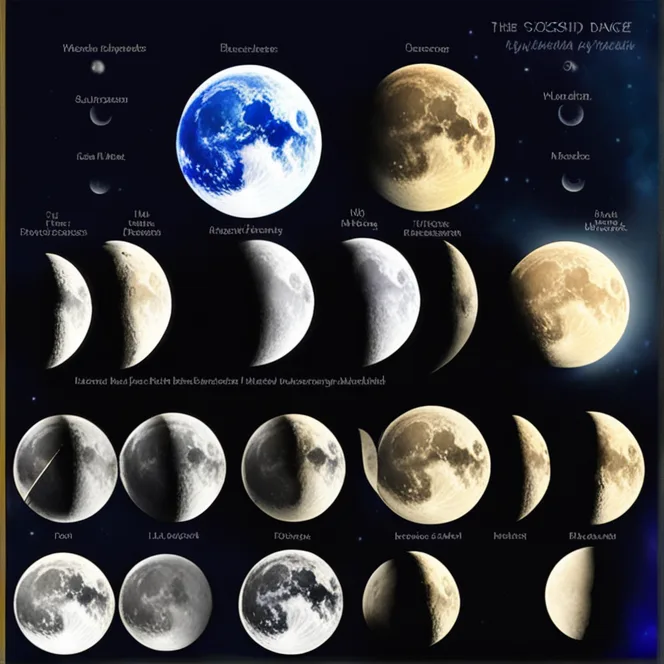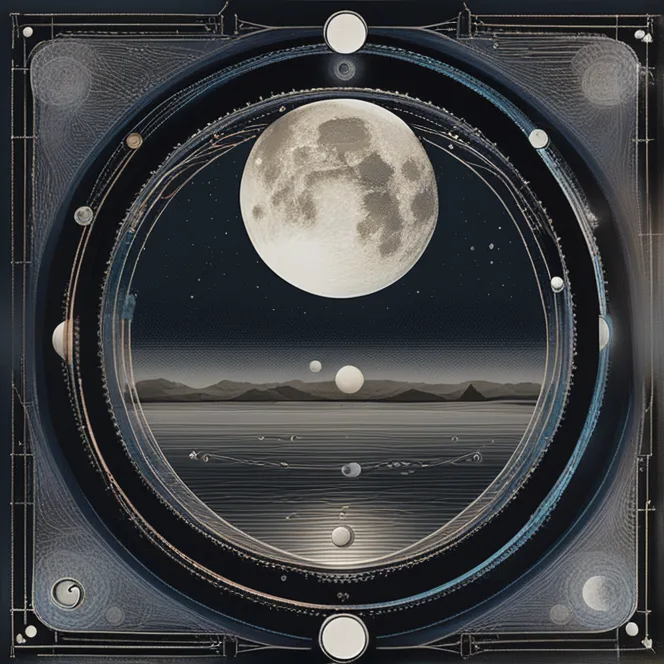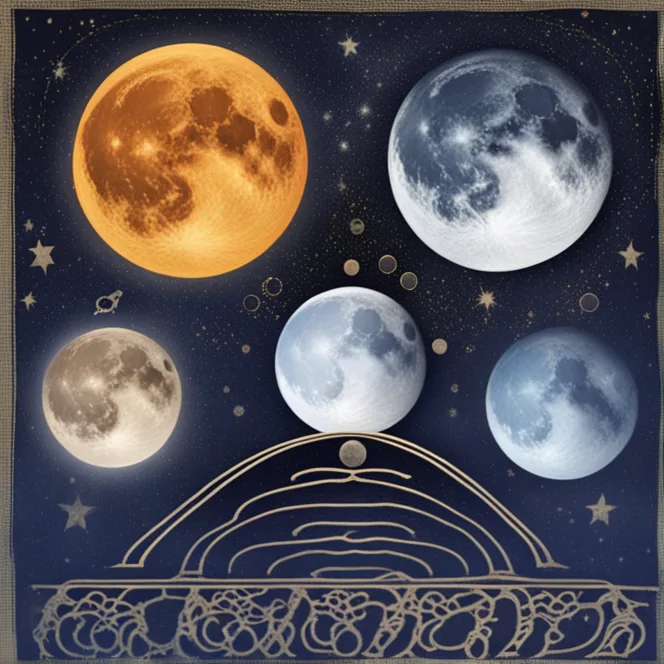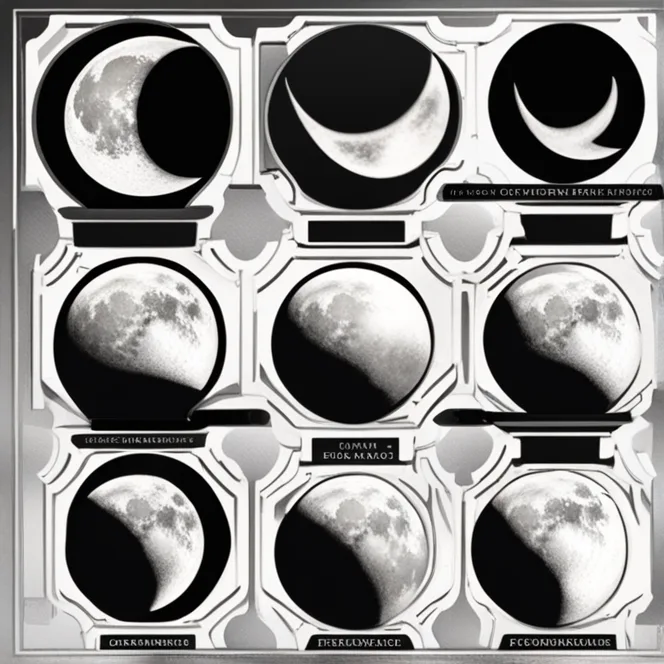
Moon Phases & Retrogrades: A Symphony In The Sky
Explore the intricate relationship between the moon's phases, planetary retrogrades, and their influence on personal and cosmic energy in this enlightening article.
article by Priya Deshmukh
Introducing the Lunar Cycle
The lunar cycle is fundamental to understanding the dance between the moon phases and retrograde planets. Each phase of the moon—new, waxing, full, and waning—exudes a specific type of energy. Beginning with the New Moon, a time synonymous with new beginnings and intentions, the cycle grows with the Waxing Moon, enhancing motivation and building momentum. The Full Moon illuminates our lives, bringing things to fruition, while the Waning Moon invites reflection and release, creating a space for the cycle to begin anew. These phases correspond with our personal energy levels, emotions, and the unfolding narratives of our lives.

Planetary Retrograde Defined
When we speak of a planet going retrograde, we’re referring to the optical illusion that it’s moving backward in the sky from our vantage point on Earth. Although no planet actually reverses its orbit, this apparent reversal shifts the energies they radiate. Mercury retrograde is the most infamous, often blamed for communication snafus and technology breakdowns. However, every planet in our solar system experiences retrograde periods, influencing different facets of our existence—from love and wealth to ambition and introspection—each according to the planet's symbolic domain.

The Synergy of Moon and Retrogrades
Understanding the interplay between the moon phases and retrograde periods is akin to mastering a cosmic rhythm. During the New Moon, beginning something new while Mercury retrogrades might require extra review later. A Full Moon during Venus retrograde could make us reassess our relationships and values. Each combination of lunar phases and retrograde periods offers unique challenges and opportunities for growth, acting as a celestial guide to our internal and external worlds. This synergy can be harnessed for personal development, timing important decisions with the ebb and flow of cosmic energies.

Retrograde Survival Tips
Surviving and thriving during retrograde periods requires patience, awareness, and a touch of strategic planning. Backing up data is critical during Mercury retrograde, while reassessing investments might be prudent when Venus takes its turn. Utilizing the grounding and intuitive power of the Waning Moon can help mitigate the chaos retrogrades may bring, providing a period of calm reflection before taking action. By anticipating these shifts, we can sail through retrograde storms with greater ease and harness their potential for positive change.

Harmonizing with the Celestial Flow
Living in harmony with the moon’s phases and planetary retrogrades means being mindful of the unique rhythms they create. Charting moon phases alongside retrograde calendars helps individuals and astrologers alike find the most auspicious times for various activities. Whether it's starting a new project under a Waxing Moon or ending old habits as Saturn retrogrades, aligning actions with cosmic rhythms can optimize outcomes. The goal is not to fear these celestial events but to understand and move with them, recognizing their influence as part of nature's timeless wisdom.
Embracing Celestial Influence
To conclude, both moon phases and retrograde periods play a significant role in the tapestry of our lives. They represent a larger celestial dialogue that can provide insights and guidance if we learn to listen and interpret their signals. Embracing the moon’s phases and the retrogrades rather than resisting them encourages flow with the universal currents, bringing deeper awareness and synchronization with the natural order of the cosmos. As we attune to these heavenly patterns, we unlock pathways to personal growth and cosmic harmony.
Published: 12/4/2023
Modified: 12/5/2023
More predictions
Come back here soon to learn more about yourself and your future


Lunar Phases & Their Impact: A Year In Moon Cycles
The moon, our closest celestial neighbor, has captivated humanity for millennia, not just for its physical beauty but for its profound influence on life on Earth. The lunar phases, as the moon completes its orbit around our planet, have significant impacts on the natural world, including human behavior and emotions. These phases, each with its unique characteristics and energies, create a rhythm that influences a wide array of activities and experiences.


Mercury as the Morning Star: Celestial Herald of Dawn
Mercury, the smallest member of our solar system, extends its influence far beyond its physical size, captivating our imagination both as an astronomical body and a mythological symbol. Its unique orbital path around the Sun allows it to shine as both the Evening Star and the Morning Star at different times. This article focuses on Mercury's intriguing role as the Morning Star, exploring not only its astronomical journey but also the rich tapestry of symbolism it weaves as it heralds the break of dawn.


The Midpoint Of Retrograde Unveiled
Mercury, known as the messenger planet, frequently dominates astrological discussions due to its notorious retrograde phases. However, nestled within this retrograde is a lesser-known but profoundly significant event: the Mercury Inferior Conjunction. This event marks the midpoint of the retrograde and offers a deeper understanding of Mercury's dance in the sky.